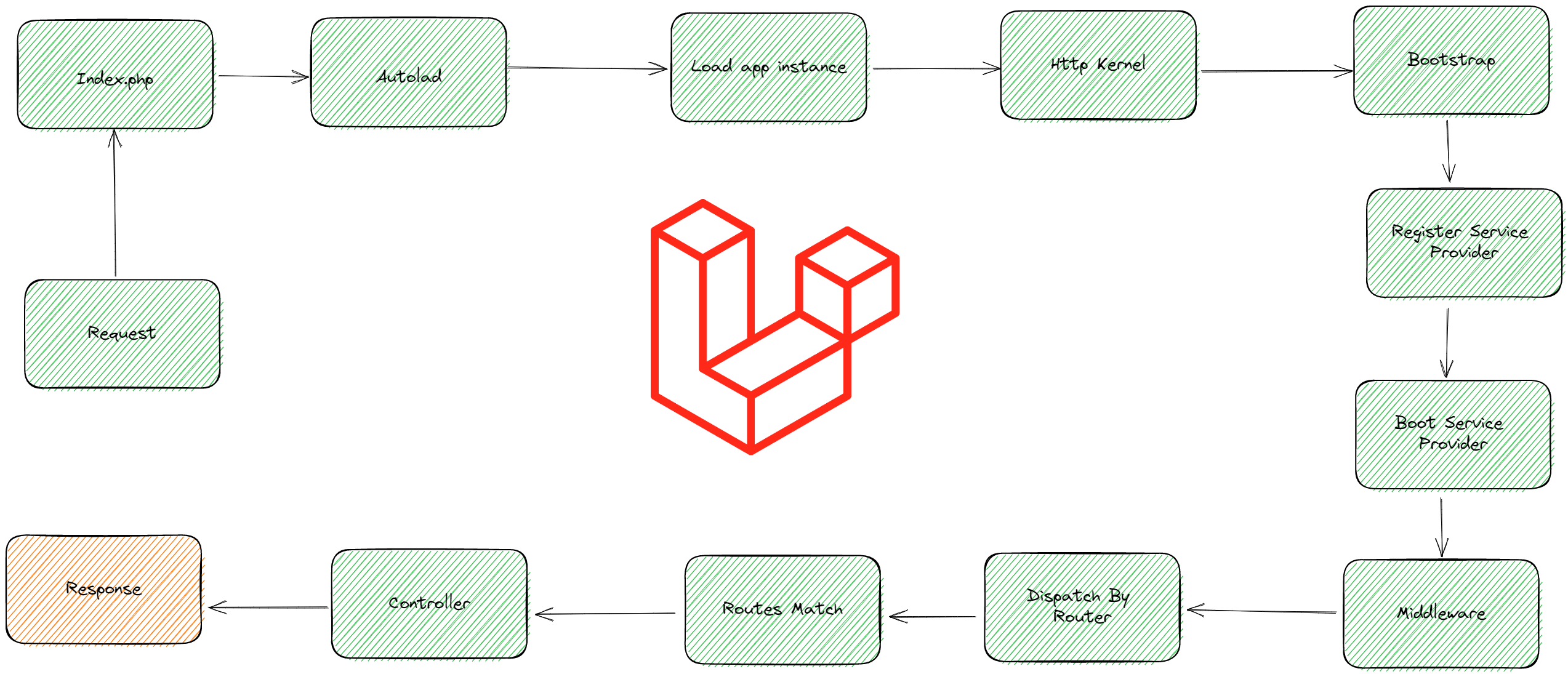Laravel Service Providers Notes

Description
This article was originally published on my old blog on Tuesday, May 16, 2023.
What is a service provider
Serivce providers are just classes to register some global functionalities.
This image illustrates the Laravel request lifecycle, that shows that Service providers are registered and booted at the beginning of every Laravel application. As mentioned in the article linked here, all service providers listed in config/app.php are executed twice, following a top-to-bottom iteration.

The first iteration is looking for an optional method register() which may be used to initiate something before the boot() method.
Then, the second iteration executes the boot() method of all providers. Again, one by one, from top to bottom of the 'providers' array.
And then, after all the service providers have been processed, Laravel goes to parsing the route, executing the Controller, using Models, etc.
In the filament documentation, they mention the following:
You may customize navigation groups by calling
Filament::registerNavigationGroups()from theboot()method of any service provider
This means that it is not necessary to use a specific service provider class; however, for better organization, we use service classes. Povilas Korop explains this in his video link
Creating a Custom Service Provider
To create a custom service provider, you can follow these steps:
- Generate the
ViewServiceProviderusing the following command:
php artisan make:provider ViewServiceProvider
- In the
ViewServiceProviderclass, define thebootmethod as shown below to make a blade directive global:
public function boot(): void
{
Blade::directive('greeting', function ($expression) {
return "<?php echo 'Hello ' . ($expression); ?>";
});
}
- Include the service provider in the
config/app.phpfile, under theprovidersarray:
'providers' => ServiceProvider::defaultProviders()->merge([
App\Providers\AppServiceProvider::class,
App\Providers\AuthServiceProvider::class,
// App\Providers\BroadcastServiceProvider::class,
App\Providers\EventServiceProvider::class,
App\Providers\RouteServiceProvider::class,
ViewServiceProvider::class,
])->toArray(),
Links
Here are some helpful resources I found on Google for understanding Laravel Service Providers